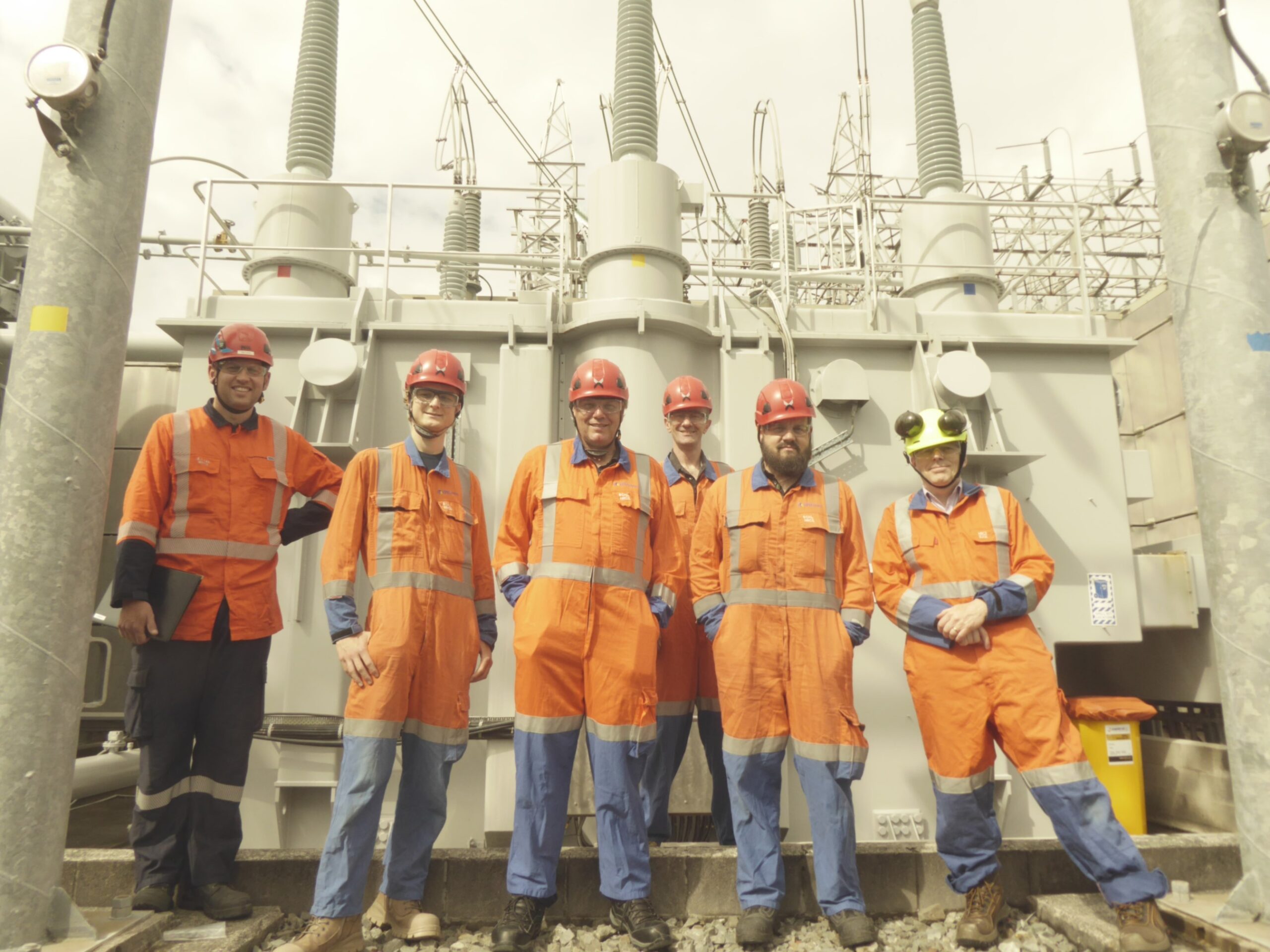It can be challenging to measure the real world effects of Geomagnetically Induced Currents (GICs) on the electrical grid, because researchers and engineers have to wait until solar activity causes a significant geomagnetic disturbance in the Earth’s magnetic field. Having no control over when these events might happen or how extreme they can be places big limitations on the kinds of measurements that the Solar Tsunamis team have to work with.
In order to overcome this limitation, the Solar Tsunamis team have planned two “injection campaigns”, in which a controlled amount of DC current will be injected into the New Zealand transmission grid at particular substations, and data will be collected to investigate its effect on transformers and the grid itself. The purpose of this is to conduct a controlled experiment simulating the space weather impacts of GICs on transformers in an operational substation.

The first injection campaign took place in January 2023 at the substation earth grid at Haywards, Wellington. The team members present included: Andrew Lapthorn, Stewart Hardie, Soren Subritzky and Paul Agger from the University of Canterbury (UC); Ciaran Beggan, Juliane Huebert, and Eliot Eaton from the British Geological Survey (BGS); Mark Clilverd from the British Antarctic Survey (BAS); representatives from GNS Science; and Mike Dalzell from Transpower.
The team injected smaller DC currents, simulating small scale events, into the grid during six periods of 1-2 hours duration over the course of a week, using High Voltage DC converters as the source of current. Power quality monitoring was set up on three transformers to collect data for Transpower, and other scientific equipment was also installed around the substation by UC, BGS and BAS – with support from Otago and GNS staff.
The information collected during this campaign is valuable for mitigating the effects of GICs on power grids. By injecting DC current into the substation earth grid, researchers simulated the effects of smaller GICs on the grid, helping them to understand how much larger GICs might impact the grid, and enabling them to develop mitigation strategies to prevent damage to grid infrastructure. The power quality monitoring on the transformers provides insights into the behaviour of the grid during GIC events and can help improve the design of power grid components to withstand GICs. This experiment is an important step in improving the resilience of power grids to GICs and ensuring the reliable delivery of electricity to consumers during solar storm events.
Top: A photo of some of the team attending the First Injection Campaign. From left to right: Mike Dalzell, Soren Subritzky, Mark Clilverd, Stewart Hardie, Andrew Lapthorn and Neville Watson
Centre: Haywards substation in the Hutt Valley, courtesy of Te Ara. Photograph by Andrew McMillan.


